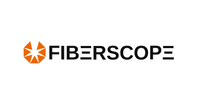
FIBERSCOPE.net products
Veterinary Endoscope
CrystalEye - Video Otoscope with Portable Monitor
Medit`s portable version of the Video Otoscope has been upgraded to provide you with a state of the art optical device to perform live inspections of the ear canal and tympanic membrane, for diagnostics and fitting hearing aids. These units can also be used to directly capture images and video of your inspections through the portable monitor that displays the live image.
Medit - Flexible HD Video Gastroscope for Large Animals
The FVG Video Gastroscopes also feature a waterproof insertion probe with 4-way tip articulation, an instrument channel for flexible forceps, additional channels for air/water, and suction (additional unit required), a wide angle 140 degree field of view, a focal range of 5mm – 100mm from the tip, and a 200 watt Halogen light source incorporated into the design. For customers looking to capture images, the FVG videoscopes connect directly with computer monitors, and offer on screen image capture. For a portable option, a USB capture box is included to connect the videoscope directly to a computer/laptop, allowing you to view the live image, and capture images and video direct to your hard drive. With the video processor built into the light source there are also adjustments that can be made to the image including a white balance and sharp focus.
Telescope for Vaginoscopy, Cystoscopy and Transcervical Insemination
Common indications for veterinarian vaginoscopy and cystoscopy include such conditions as chronic cystitis, incontinence, trauma, vaginal discharge, bleeding, and foreign body removal, to name just a few of the most frequent ones. In addition, both procedures may be performed in conjunction with artificial insemination. The timely treatment of the conditions mentioned above is critical to the reproductive and general health of small animals. At the same time, artificial insemination in dogs under visual control provides a proven way to increase the conception rates and overall reproductive efficiency. The main advantage of these procedures is that the area to be reached can be approached either through natural bodily openings or through small incisions, thus minimizing intrusion and risk for the animal.



